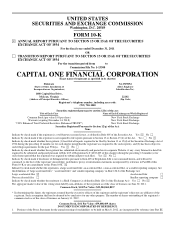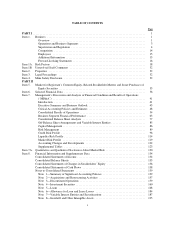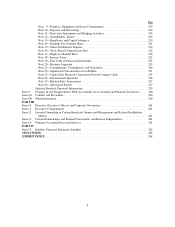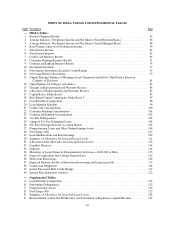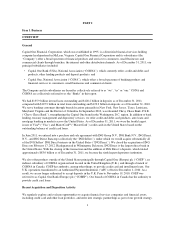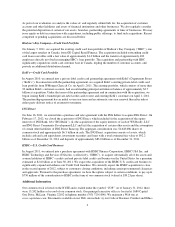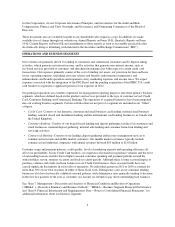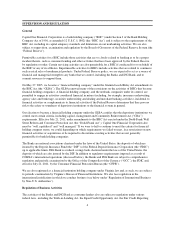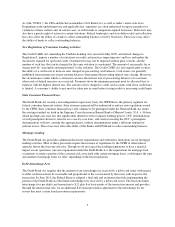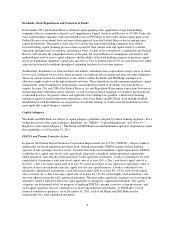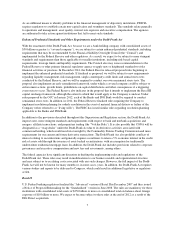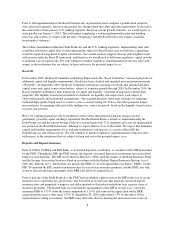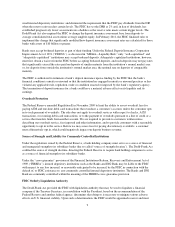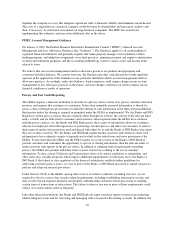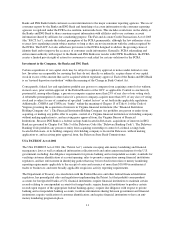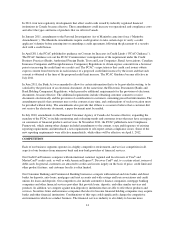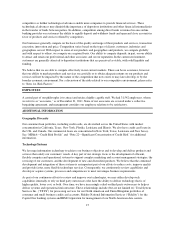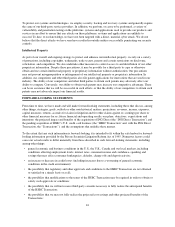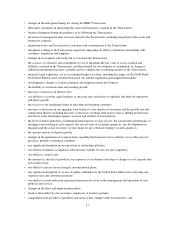Capital One 2011 Annual Report Download - page 27
Download and view the complete annual report
Please find page 27 of the 2011 Capital One annual report below. You can navigate through the pages in the report by either clicking on the pages listed below, or by using the keyword search tool below to find specific information within the annual report.As an additional means to identify problems in the financial management of depository institutions, FDICIA
requires regulators to establish certain non-capital safety and soundness standards. The standards relate generally
to operations and management, asset quality, interest rate exposure and executive compensation. The agencies
are authorized to take action against institutions that fail to meet such standards.
Enhanced Prudential Standards and Other Requirements under the Dodd-Frank Act
With the enactment of the Dodd-Frank Act, because we are a bank holding company with consolidated assets of
$50 billion or greater (a “covered company”), we are subject to certain enhanced prudential standards, including
requirements that may be recommended by the Financial Stability Oversight Council (the “Council”) and
implemented by the Federal Reserve and other regulators. As a result, we expect to be subject to more stringent
standards and requirements than those applicable for smaller institutions, including risk-based capital
requirements, leverage limits and liquidity requirements. The Council also may issue recommendations to the
Federal Reserve or other primary financial regulatory agency to apply new or heightened standards to risky
financial activities or practices. In December 2011, the Federal Reserve released proposed rules beginning to
implement the enhanced prudential standards. If finalized as proposed, we will be subject to new requirements
regarding liquidity management, risk management, single-counterparty credit limits and annual stress tests
conducted by the Federal Reserve, and we will be required to conduct our own semiannual stress tests. The
proposal also implements an early remediation framework, under which a covered company could be subject to
enforcement actions, growth limits, prohibitions on capital distributions and other consequences if a triggering
event were to occur. The Federal Reserve also indicates in the proposal that it intends to implement the Basel III
capital surcharge framework, although the extent to which that would apply to the Company is unclear. Under
rules proposed by the OCC in January 2012, each of the Banks and ING Bank would be required to conduct
semiannual stress tests. In addition, in 2011, the Federal Reserve finalized rules requiring the Company to
implement resolution planning for orderly resolution in the event of material financial distress or failure of the
Company (often referred to as “living wills”). The FDIC has issued similar rules regarding resolution planning
applicable to the Banks and ING Bank.
In addition to the provisions described throughout this Supervision and Regulation section, the Dodd-Frank Act
imposes new, more stringent standards and requirements with respect to bank and nonbank acquisitions and
mergers, affiliate transactions, and proprietary trading (the “Volcker Rule”). It is also possible that CONA will be
designated as a “swap dealer” under the Dodd-Frank Act due to its derivative activities associated with
commercial lending, which would result in oversight by the Commodity Futures Trading Commission and more
requirements for our current and future derivative transactions. The Dodd-Frank Act also prohibits conflicts of
interest relating to securitizations and generally requires securitizers to retain a 5% economic interest in the credit
risk of assets sold through the issuance of asset-backed securitizations, with an exemption for traditionally
underwritten residential mortgage loans. In addition, the Dodd-Frank Act includes provisions related to corporate
governance and executive compensation and new fees and assessments, among others.
The federal agencies have significant discretion in drafting the implementing rules and regulations of the
Dodd-Frank Act. These rules may result in modifications to our business models and organizational structure,
and may subject us to escalating costs associated with any such changes. However, the full impact of the Dodd-
Frank Act will not be known for many months or, in some cases, years. In addition, the Dodd-Frank Act requires
various studies and reports to be delivered to Congress, which could result in additional legislative or regulatory
action.
Basel II
U.S. Federal banking regulators finalized the “Advanced” version of Basel II in December 2007 and they issued
a Notice of Proposed Rulemaking for the “Standardized” version in June 2008. The rules are mandatory for those
institutions with consolidated total assets of $250 billion or more or consolidated total on-balance-sheet foreign
exposure of $10 billion or more. We expect to become subject to these rules at the end of 2012 as a result of the
ING Direct acquisition.
7


